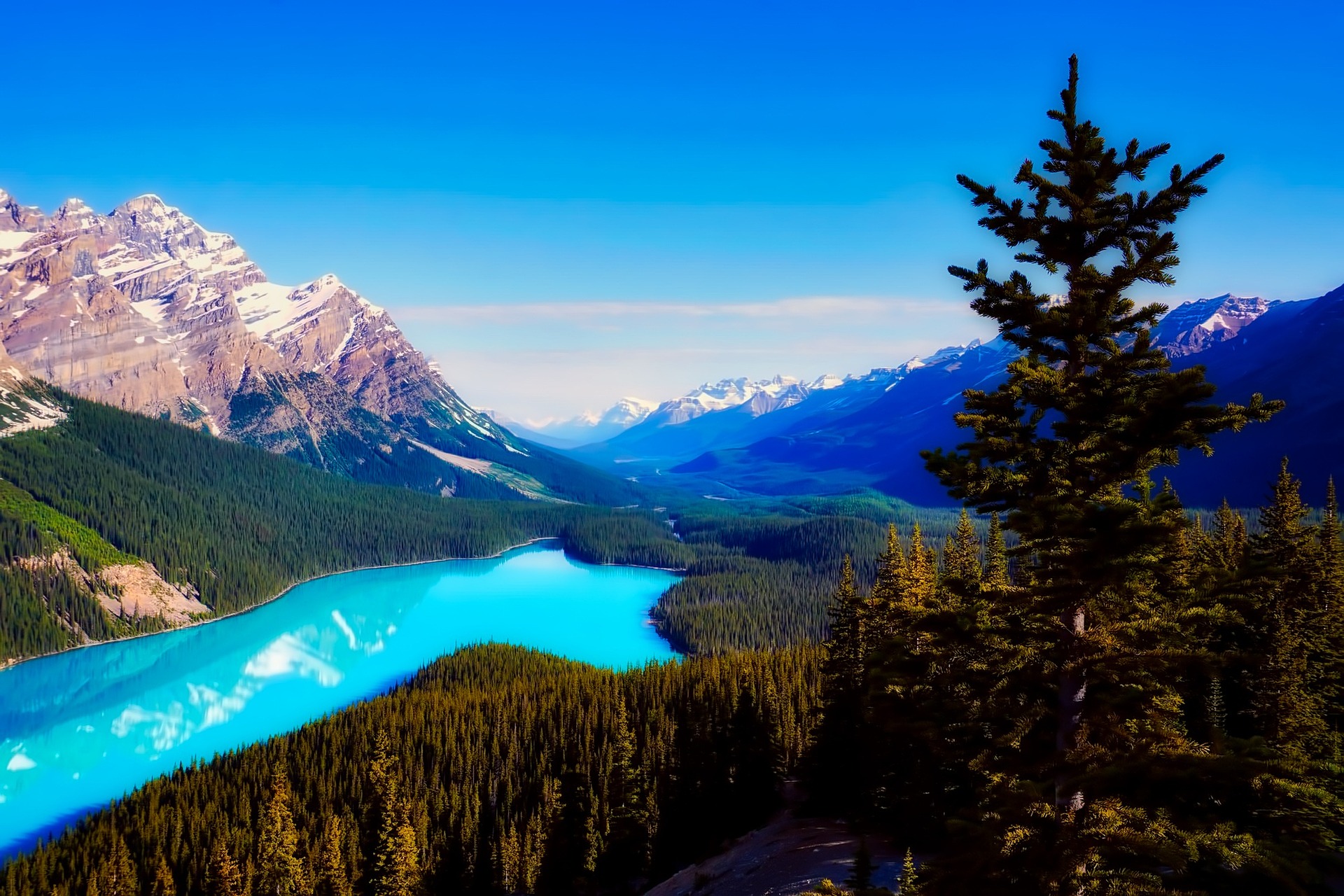
Peyto Lake is a glacier-fed lake located in Banff National Park in the Canadian Rockies. Situated near the Icefields Parkway, the lake is renowned for its bright turquoise color, which is especially vivid during the summer months. This striking hue results from significant amounts of glacial rock flour flowing into the lake from a nearby glacier; the suspended rock particles reflect light in a way that gives the water its distinctive color.
The lake is named after Bill Peyto, an early trail guide and trapper in the Banff area. It is formed in a valley of the Waputik Range, nestled between Caldron Peak, Peyto Peak, and Mount Jimmy Simpson, at an elevation of approximately 1,860 meters (6,100 feet).
Peyto Lake is best viewed from Bow Summit, the highest point on the Icefields Parkway. The viewpoint offers panoramic vistas of the lake and surrounding mountains, making it a popular spot for sightseeing and photography. In 2021, Parks Canada completed improvements to the lake's viewpoint, trails, and parking areas to enhance visitor experience.
The lake is fed by Peyto Creek, which drains water from Caldron Lake and Peyto Glacier, part of the Wapta Icefield. Peyto Lake serves as the origin of the Mistaya River, which flows northwest from the lake's outflow.
Due to its vibrant color and stunning alpine setting, Peyto Lake is a frequent subject in photographs and is featured in many illustrated books. The combination of its unique coloration, geological features, and accessibility makes it a must-see destination for visitors to Banff National Park.
Peyto Lake is a glacier-fed lake in Banff National Park in the Canadian Rockies. The lake is near the Icefields Parkway. It was named for Bill Peyto, an early trail guide and trapper in the Banff area..